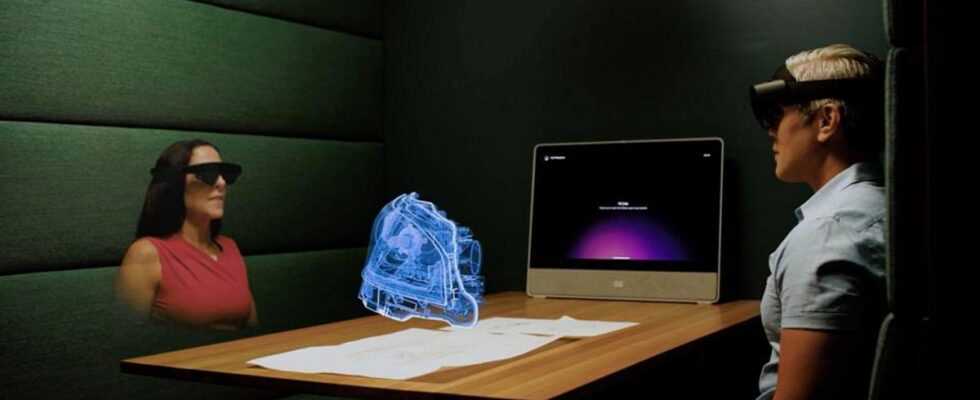Image: Cisco, Webex Hologram.
According to Gartner, only 25% of meetings will be face-to-face by 2024. With the explosion in demand over the last two years, marked by the pandemic, video conferencing market players such as Zoom, Microsoft , Google or Cisco Webex are making great efforts to optimize their features.
In a work organization in hybrid mode, Cisco imagines, like Microsoft Mesh, the future of human interactions in the form of holograms. Announced last October, and still at the prototype stage, the Webex Hologram device promises to make video exchanges more immersive. I tested it for ZDNet in the Cisco demo center in Issy-les-Moulineaux (92).
My contact, Tobias Brodtkorb, technical marketing engineering leader for Collaboration Phones, Headsets and Room Devices, guided me remotely from Oslo to set up the device, which took just a few minutes. Filmed on a green screen and surrounded by a dozen cameras to capture his gestures from different angles, the engineer took advantage of the video chat to review the prototype.
A fairly sharp image, but a perfectible sound
The helmet barely put on, I notice immediately that the glasses are not at all a hindrance to enjoy the experience. On the contrary, the helmet, rather loose, allows a good range of movement. This is a rather welcome feature if future Webex Hologram customers choose to present 3D objects, real or virtual, to collaborators or customers. By way of demonstration, Tobias Brodtkorb makes objects of all types and sizes appear before my eyes, such as a miniaturized car or a 3D city model. The objects that arise between the two interlocutors can be manipulated in all directions with a simple movement of the fist.
With a book in hand, the Norwegian engineer explains the effects of “parallax”, that is to say the impact of a change in the position of the observer on the observation of an object. To put it simply, it’s the ability to be able to see a book’s cover, spine, and back cover in the image, just by turning your head from right to left (which would be impossible with 2D) .
The effect is impressive. On the other hand, the field of vision with the virtual reality helmet would benefit from being widened. It is indeed difficult to see the hands of my interlocutor who are placed on the table without lowering the head. The other defect that I notice comes from the sound: the latter comes directly from the computer placed next to me, from which the videoconference is broadcast. If the immersive sound experience is not there yet, on the other hand, the visual rendering is rather qualitative. The image is sharp, which has the ability to limit the feeling of motion sickness.

With a wave of the hand, a menu appears in front of the user who can notably choose 3D objects to integrate into the scene. Image: Cisco, Webex Hologram.
Realistic feelings
When removing the virtual reality headset, it takes a few milliseconds to find its spatial cues in the room. This is proof that, ultimately, even in beta, immersion worked well. Of course, the headset itself provides a physical barrier to a truly immersive experience. But the fairly realistic holograms give the impression that your interlocutor is in the room in front of you.
Maybe, in the future, engineers will manage to find a way to do without it? If a videoconference meeting takes place with several people, will it be possible to display several holograms in real time? All these questions are not yet resolved, admits Tobias Brodtkorb.
In the meantime, the site has been launched, and the first customers are beginning to show signs of interest in the technology, particularly in the context of distance training, he indicates.
